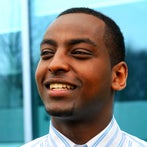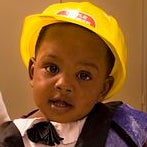
Autism
According to the Centers for Disease Control and Prevention (CDC), about 1 percent of all babies born in Alaska each year will develop an autism spectrum disorder. That means out of 11,000 Alaskans born this year, 110 individuals will be diagnosed with an autism disorder by the age of eight.
What is Autism Spectrum Disorder?
Autism spectrum disorder (ASD) is a developmental disorder that can cause social, communication and behavioral challenges for affected children and adults.
These challenges may include:
Social Communication/ Interaction
- Difficulty establishing or maintaining back-and forth conversations and interactions
- Inability to initiate an interaction
- Problems with shared attention or sharing of emotions and interests with others
- Abnormal eye contact, posture, facial expressions, tone of voice and gestures, as well as an inability to understand these Lack of interest in other people
- Difficulties in pretend play
- Engaging in age-appropriate social activities
- Problems adjusting to different social expectations.
Restrictive/Repetitive
- Behavior Stereotyped or repetitive speech, motor movements or use of objects
- Excessive adherence to routines
- Ritualized patterns of verbal or nonverbal behavior
- Excessive resistance to change
- Highly restricted interests that are abnormal in intensity or focus
- Hyper or hypo reactivity to sensory input or unusual interest in sensory aspects of the environment
Autism can vary person to person, and there’s a wide range of ability for people with ASD. Some people with ASD are gifted, while others need significant levels of support to ensure their health and well-being. While great strides are being made in autism research, there is no known cause, or a known singular effective treatment for ASD.
We Can Help.
Early diagnosis and early intervention are crucial, which is why we started the program “Making The First 5 Count.” Our therapists and staff believe that people with ASD can make significant progress through therapy and treatments at any age, and that anybody with ASD can lead meaningful and productive lives. If you think your child might be experiencing delays, take Easterseals Ages & Stages questionnaire


